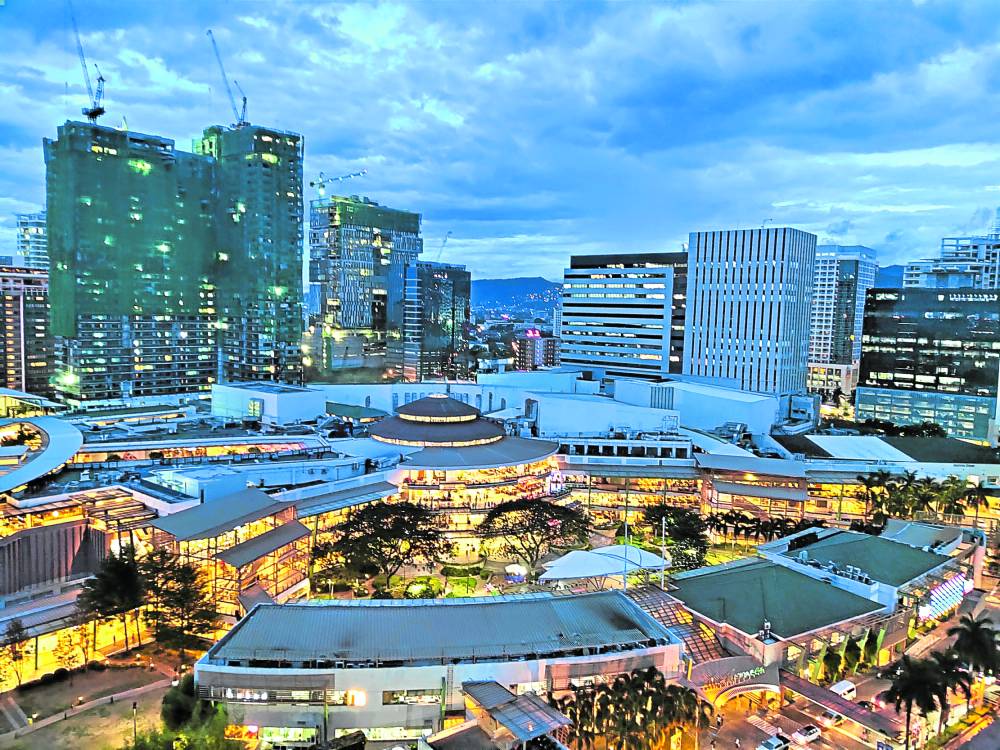As the economy further opened, the first half of 2022 looked much better than a year ago.
Coupled with seasonal growth fueled by election-related spending, the pent-up and revenge spending helped lift the national economy and increase the level of activities in the real estate market. After hitting the bottom of the market cycle last year, the major real estate segments are gearing up toward the recovery stage.
Back to the office
As physical occupancy in office developments recovers, pre-commitment in upcoming developments—albeit still below the pre-pandemic levels—is similarly increasing.
Corporate occupiers have started to revisit their real estate (expansion) strategies given the ongoing evolution of the office space. Office space demand in the medium- to long-term will also consider the need to continuously observe safe distancing protocols and to have more collaborative (common) spaces.
Metro Manila’s average asking rent for Prime or Grade A developments meanwhile continues to exhibit signs of recovery, with year-on-year growth maintaining a slowing rate of decline. Within the first half, asking rents are expected to have fully recovered from an almost 3 percent decline a year ago. Within the next six months, vacancy rates are seen to linger in the mid-teens level as more than 300,000 sqm of new office spaces are expected to be completed.
Revenge spending
As mass gathering restrictions are eased, foot traffic in mall developments is seen to significantly improve.
Despite the improvement in retail sales and activities however, vacancy rates in some shopping malls remain high. Retailers are taking time to realize expansion plans as the new customer experience is slowly taking shape.
Due to the convenience of e-commerce solutions introduced at the height of the pandemic, such as curbside pickup solutions and delivery programs, the integration between physical and digital shopping experiences will influence the future design and configuration of retail developments.
Developers should now be looking at viable space repurposing strategies for long-term risk planning to keep their respective developments relevant.
Travel bouncing back
While average daily expenditure and the average length of stay of inbound tourists have recovered from their year-ago levels, tourism-related indicators remain significantly below the pre-pandemic levels.
Similar to shopping mall developments, hotels should maximize digitized buyer experience that will promote a contactless and safe experience for the guests. In the short-term, hotel establishments should focus on promoting alternative use of hotel spaces such as make-shift office spaces for those looking at alternative workspaces.
Logistics: a boon and a bane
The growth of the logistics segment has driven the increase in the pipeline supply of new developments, especially in traditional locations in the Calabarzon and Central Luzon Regions.
The demand for quality logistics facilities has driven a consolidated 5 percent increase in the capital value of industrial lands in the last 24 months. In the medium- to long-term, the growing demand from data centers will exert further upward pressure on asset value growth, especially once the critical site selection factors, notably the cost of utilities and tax/regulatory climate, are properly addressed.
Meanwhile, the varying degrees of lockdowns among major supply chain markets will affect the completion of the supply pipeline across the different real estate segments.
Outlook in the next six months
Real estate market recovery in the Philippines is off to a slow start in 2022 due to the continued threats of the COVID-19 Omicron sub-variant and the short-term uncertainties (in significant government policy continuity) leading to the national elections.
The crucial growth factors, however, will need to be harnessed in the next six months to propel the market towards full recovery in the long term. While revenge spending helped in the recovery of key segments, the wealth effect may lose its appeal soon due to several economic headwinds.
The anticipated policy tightening by the Bangko Sentral ng Pilipinas (BSP) to combat increasing inflation rates and calm down investors will have a short-term effect on investment decisions. The relevant policies and consistent application of rationalized incentives will provide the right signal to investors.
On the legislative side, the promotion of relevant mandates such as the Financial Institutions Strategic Transfer Act (FIST Act), which is expiring by December 2022, will aid in strengthening the fragile road to recovery.
The author is director of Research, Consulting and Advisory Services at Cushman & Wakefield
